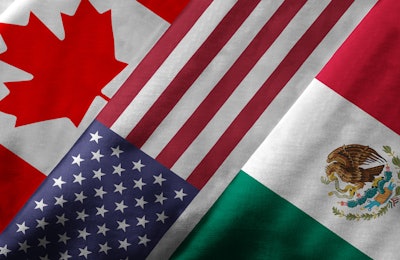
I’m a big fan of Murphy’s Law. The old adage, “what can go wrong will go wrong,” and its many corollaries provide a constant reminder to always prepare for the worst and be unsurprised if and when everything goes to the dogs.
Now, the North American Free Trade Agreement (NAFTA) – which for better or worse shaped the recent economic history of the U.S., Mexico and Canada – is up for renegotiation. Reuters reports the latest, seventh, round of negotiations took place in late February 2018 and early March 2018. The U.S. is reportedly looking for "an agreement 'in principle' in coming weeks" as of March 5. As we’ve learned through the first year of President Donald Trump’s administration: Expect the unexpected.
Life without NAFTA?
With this in mind, the U.S. poultry industry needs to prepare itself for a world without NAFTA or at least a world without the agreement we’ve lived with since 1994.
While the agriculture industry is generally supportive of the trade policy, it’s entirely possible the deal will be changed, overhauled or scrapped altogether. It's hard to sort out what's political bluster and what's bonafide dealmaking, especially with 2018 elections coming first in Mexico in July 2018 and then in the U.S. in November 2018. Nevertheless, it makes good business sense to prepare for any outcome and put together a plan to carry on in case there is some sort of significant market disruption.
Moving on with new partners
It is possible that the U.S. could lose part, or a significant amount, of its Mexican market. This would be difficult as the country is a significant destination for both chicken and turkey exports. According to the U.S. Poultry & Egg Export Council, Mexico was the top export market for both U.S. broiler and turkey receiving 18.4 percent and 61.9 percent of total export volumes, respectively.
Though this would be harsh, especially as the U.S. is increasing its production of chicken and other meat in 2018 and beyond, it wouldn’t be the end of the world.
For example, Russia ended its on-again-off-again relationship with U.S. meat exports in 2014 for political reasons. At the time, the country was the second largest export market for U.S. chicken. Despite the loss, the industry was able to carry on thanks to relationships with other, new trading partners like Cuba, Iraq and Angola.
If the U.S. loses another major export destination, it will hurt. However, the country benefits from access to new, diverse markets that will help insulate the poultry industry from the impact of a possible tectonic shift in its relationship with Mexico and Canada.


















